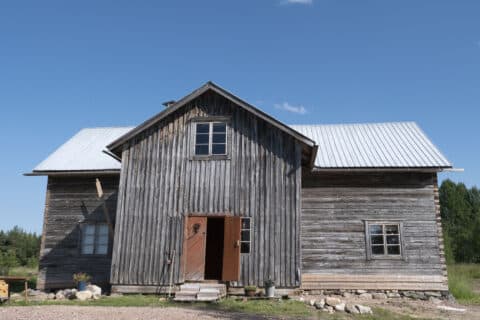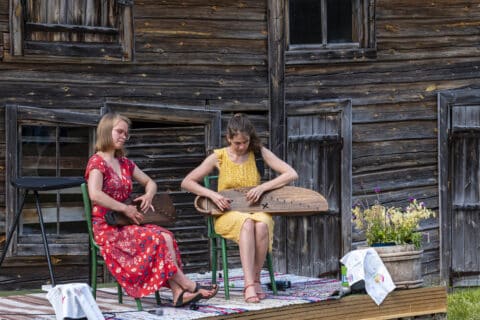UNESCO City of Literature and Kalevala
Kuhmo, located in the Eastern part of Kainuu province, is a culturally important city. The town has been known around the world for its annual Kuhmo Chamber Music Festival in July. Since 2019, Kuhmo has also been part of the UNESCO Creative Cities Network of 42 member cities and is the only City of Literature in Finland.
Kalevala
Through the ages, the bear has been appeased in Kuhmo. The king of the forest has a strong foothold in Kuhmo, as does Kalevala. One could say Kuhmo breathes in Kalevala and the magic of Kalevala resides in Kuhmo. One can sense magic if you allow yourself to take your time in the open air of Kuhmo’s wilderness; walk in the swamp and suddenly see a noble deer with huge antlers nibbling bog plants, settle on an old tree stump to eat lunch and witness an owl resting silently on the branch of a nearby tree as if it was there to deliver a secret from the lands of Kalevala, or reflect on the mythic Hiisi wild-moose. Kuhmo was also involved in the process of defining the Kalevala epic, and Karelianism, the Finnish Romanticism, found its inspiration from Kuhmo.
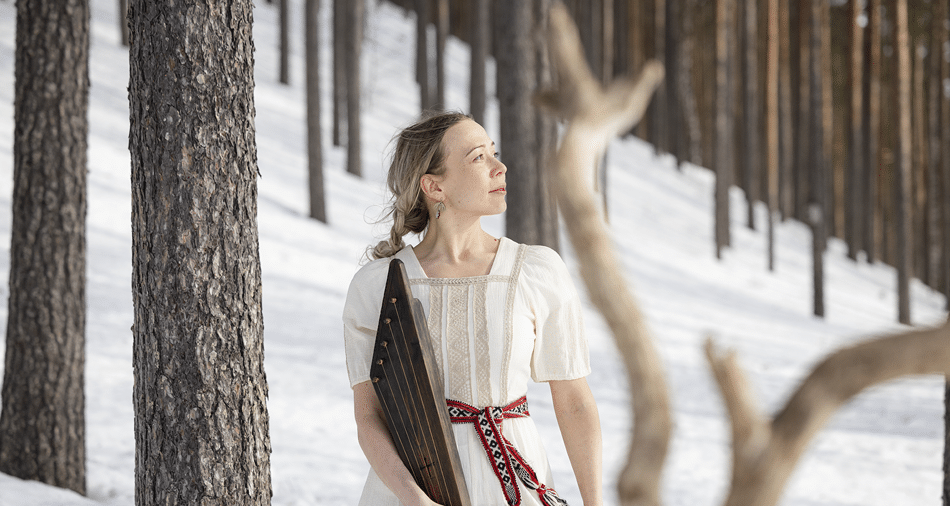
Through the ages, the bear has been appeased in Kuhmo. The king of the forest has a strong foothold in Kuhmo, as does Kalevala. One could say Kuhmo breathes in Kalevala and the magic of Kalevala resides in Kuhmo. One can sense magic if you allow yourself to take your time in the open air of Kuhmo’s wilderness; walk in the swamp and suddenly see a noble deer with huge antlers nibbling bog plants, settle on an old tree stump to eat lunch and witness an owl resting silently on the branch of a nearby tree as if it was there to deliver a secret from the lands of Kalevala, or reflect on the mythic Hiisi wild-moose. Kuhmo was also involved in the process of defining the Kalevala epic, and Karelianism, the Finnish Romanticism, found its inspiration from Kuhmo.
Elias Lönnrot passed through Kuhmo on four of his folklore collecting trips. On his first visit, he heard about and wrote down “a worm charm”, in other words, a snake spell. Nowhere in Finland has it been recorded as much as in Kuhmo. On Lönnrot‘s third folklore collecting trip in 1832, he visited Viena (White Sea) Karelia for the first time. On his way back through Lehtovaara of Vartius, he encountered an old man, a Kuhmo Huutoaho wilderness dweller, from whom he learned a fascinating tale about the Karelian heroic villain Vorna who had lived in the nearby area. From this story, Lönnrot adapted one of the first short stories in Finnish literature. On his next folklore collecting trip, Lönnrot passed by the mythical Golden Fountain in Rimmi village, about which Kristfried Ganander wrote in his 1789 book, Mythologia Fennica. Lönnrot also did part of Kalevala’s final revision work in Kuhmo. In November 1834, at the end of his official and folklore collecting trip to Kuhmo, he marked the completion of the final third of Kalevala’s manuscript with his signature, at the Kuhmo parsonage.
The seeds of Karelianism were sown in Kuhmo when the young artist Akseli Gallen-Kallela travelled there on his honeymoon, but simultaneously to search for ‘real-life materials’ and detailed studies for his Kalevala paintings.
In Kuhmo Rimmi village, Gallen-Kallela discovered the cultural realm of Viena Karelia. He adopted the figure of Elias Ahtonen, better known as Rimmin Uljaska, owner of the Rimmi estate, to serve as the personification of Väinämöinen in his paintings. His image has been strongly imprinted on Finns’ minds as the iconic figure of Väinämöinen. It is for these reasons that there is no coincidence the national Kalevala information centre, Juminkeko, is based in Kuhmo. Juminkeko provides information and experiential materials on Kalevala, while housing the world’s largest Kalevala collection.
Juminkeko warmly welcomes both those who are new to Kalevala and are veterans. There is something interesting for everyone.
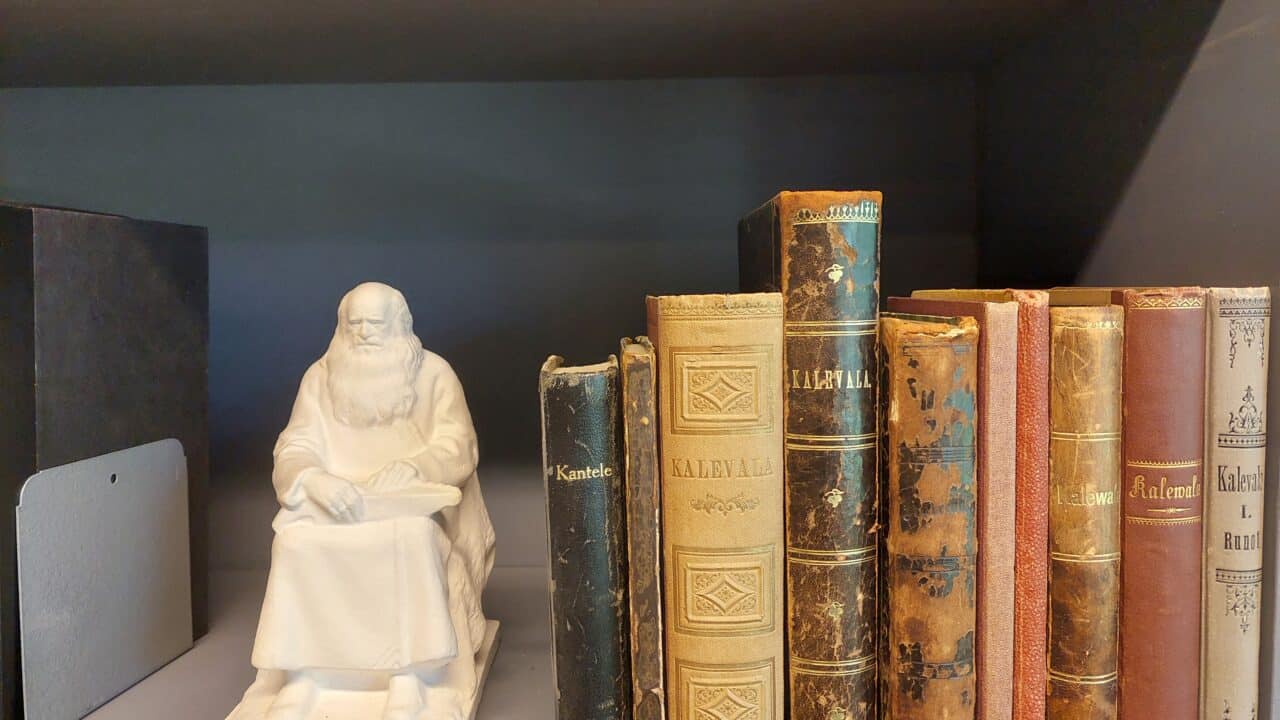
What makes Kuhmo a city of literature?
Kuhmo’s historical connection with the creation of the Finnish national epic Kalevala is a great source of pride. When Elias Lönnrot travelled on his folklore collecting trips in Viena Karelia, Kuhmo served as a resting and lodging place along the route.
Today, the legacy of Kalevala is a significant part of Kuhmo’s identity, and the influence of the national epic can be seen there in many ways. The history of Kalevala, Karelianism and Karelian cultural traditions can be explored in Juminkeko, a cultural centre dedicated to these themes. It hosts various art exhibitions and cultural events throughout the year.
Juminkeko’s archive building Koppanen is home to the Kuhmo City of Literature office. The “Kalevala’s Bridge to UNESCO” project was launched to develop and promote the City of Literature’s special events and promote Kalevala and Kuhmo contemporary literature locally and internationally, in cooperation with the international network of UNESCO Cities of Literature. In the long run, this work is aimed at introducing ever greater number of new booklovers to Kalevala and contemporary literature from Kuhmo and organising various literary events.
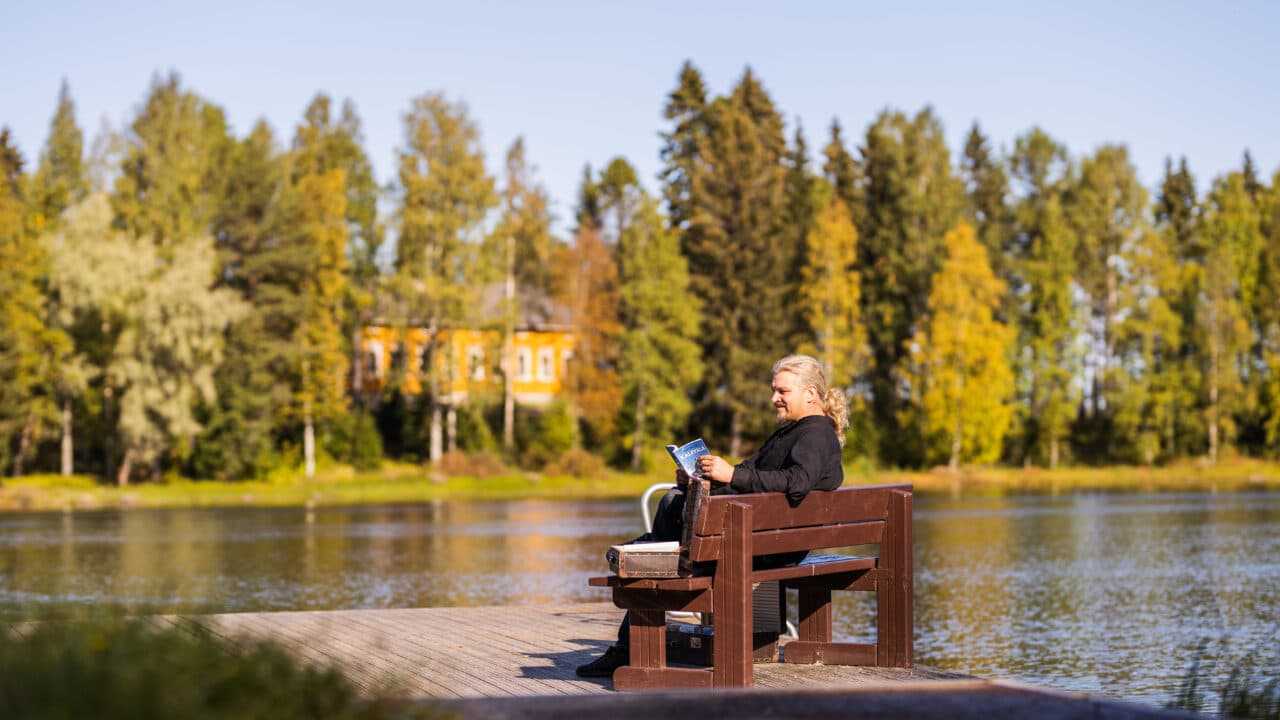
Influences of Kalevala
Kalevala influences may be found in many places throughoutKu hmo. One can spot Kalevala-themed children’s drawings on the windows of many businesses in the Kuhmo town centre. The Sommelo Music Festival offers concertgoers a wide selection of folk music and performances of the Finnish epic folklore, runosong. The Joutsentanssi Kuhmo Dance Festival draws on the stories of the national epic as inspiration for its performances.
We invite you to visit the Ikola parsonage on the shore of Pajakkakoski, where Lönnrot and Akseli Gallen-Kallela and his wife stayed on their trips to Kuhmo and Viena. One may explore Viena Karelian storytelling and cultural traditions at the Uljaskan Pirtti historical farmhouse. One of the main contributors to the literary art scene in Kuhmo is the Town Library, located on the bank of the Pajakkakoski river. The library organises book clubs, special presentations, fairy-tale readings and other events that attract both locals and travellers.
